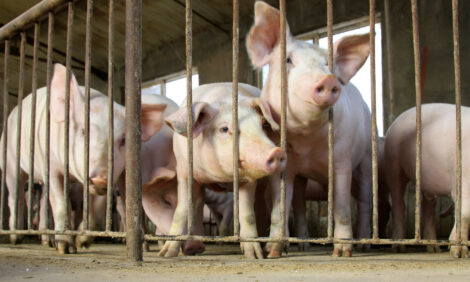



CME: Harvest Pressure Pushes Corn, Soy Futures Lower
US - USDA will issue on October 11 its latest world supply and demand estimates, including updated forecasts of US grain and meat production for 2012 and 2013. Keep in mind that the CME now offers expanded CME Globex Trading hours, write Steve Meyer and Len Steiner.Also, on major
USDA report days (the WASDE and Crop Production reports are in
that category) the exchange will offer expanded floor trading hours
for CBOT grain and oilseed futures and options.
On Thursday,
October 11, floor trading for grains and oilseeds will start at
7.20 am CT vs. the normal 9.30 am CT.
Corn and soybean futures have been drifting lower in recent weeks, in part due to harvest pressure but also following a
deteriorating outlook for the global economy. And yet, there is
plenty of uncertainty ahead both with regard to the size of
the current corn crop and the ability of the market to orderly ration supplies until the next crop.
On average, analysts
expect corn yields to be 122.9 bu/acre, very close to the USDA September estimate (see table). There have been a number of contradictory reports following harvest (two thirds of the crop has been
harvested at this point) and some analysts expect yields to actually
gain from the September level. Soybean yields are broadly expected to be higher as rains in August and early September appear
to have provided some tangible benefits.
Then there is the issue of
planted and harvested acres. There is some speculation that USDA
may notably increase the number of acres planted following certified acreage data from the Farm Service Agency (FSA). But, analysts polled ahead of the report indicated that they expect harvested acres to be around 86.1 million acres, about 1.3 million acres less
than the September USDA estimate. This would lower the ratio of
harvested / planted acres to 89.4%, compared to USDA’s 90.7% September number and 92.9% back in June. Higher abandonment
rates this year are consistent with previous drought years.
Is the
current number still is too high? At this point, it appears to us that
the analyst estimate is consistent with the normal deviation from
trend (which has been increasing). Indeed, the ratio could be lower
once the certified FSA numbers come in. On average analysts, expect corn production to be about 100 million bushels or so below the
USDA September estimate, largely due to the expected reduction in
harvested acres.
The corn balance sheet will also have to account for smaller carryover stocks. The quarterly grain stocks survey pegged September 1 corn stocks at 988.4 million bushels, compared to the
USDA estimate of 1.181 million bushels in early September.
The smaller beginning stocks and the potential for lower production
implies lower use numbers. The question is which marketing
channels will be affected. Feed and residual use was forecast to
be down 5.7% from the previous year and 13.4% from two years
ago. We could see some minor reductions here (~ 50 mil bu or
so). Ethanol and export numbers also will have to be lowered,
leading to pipeline minimum stocks of 648 mil bushels (5.8%
stocks/use ratio).








